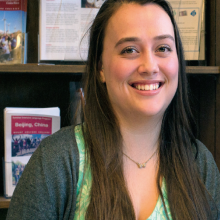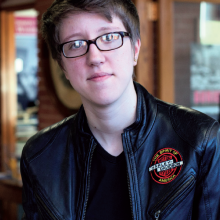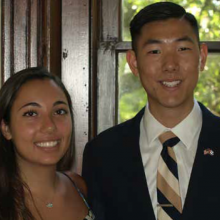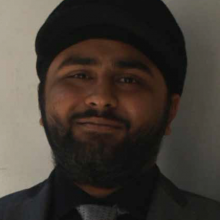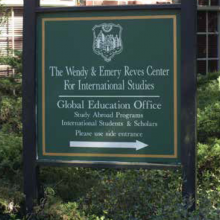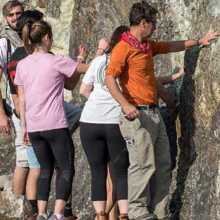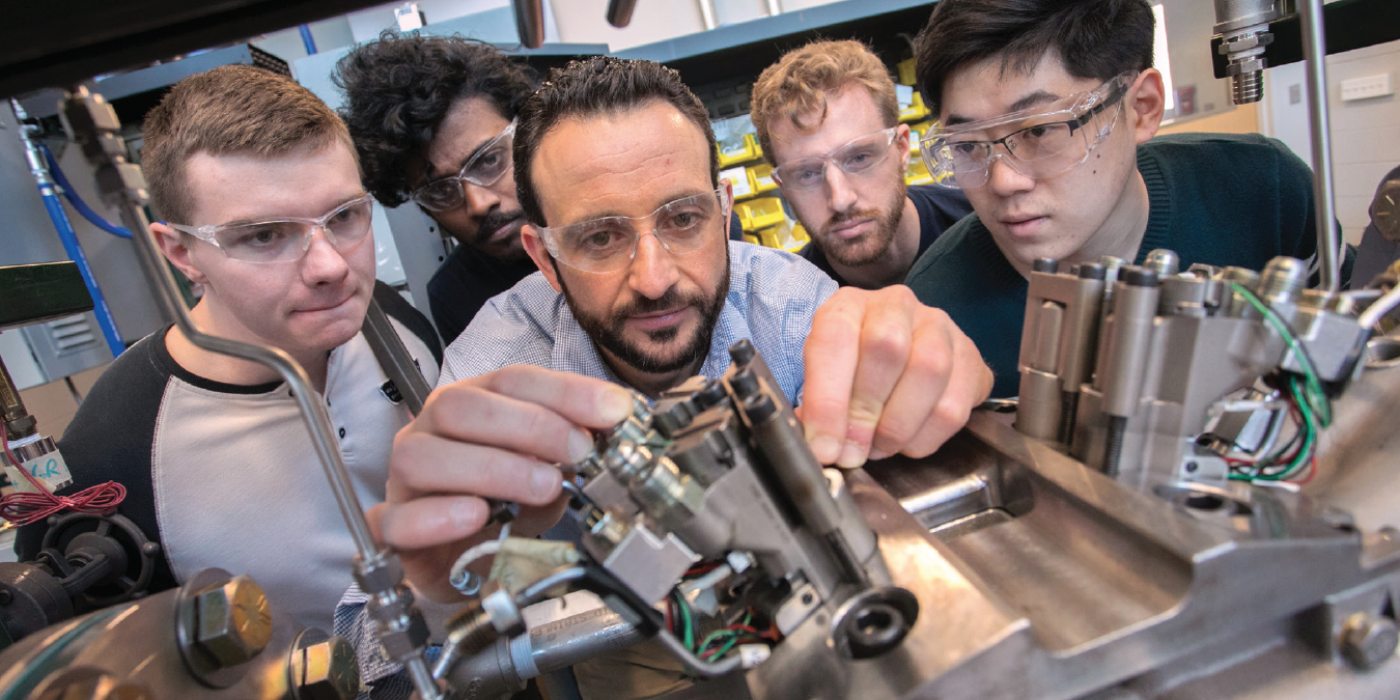2015 Comprehensive Mount Holyoke College
When Mary Lyon opened the Mount Holyoke Female Seminary in western Massachusetts in 1837, the United States had 120 colleges for men and none for women. FDR’s path-breaking labor secretary Frances Perkins, obstetrical anesthesiologist Virginia Apgar, and playwright Wendy Wasserstein passed through its Gothic halls and strolled the campus landscaped by the son of Frederick Law Olmsted. Even 16-year-old Emily Dickinson, the poet and “Belle” of nearby Amherst, attended classes for a year.
Following in their footsteps today are more than 600 international students, over a quarter of the student body. “You walk through a mini-U.N. on campus,” said Eva Paus, director of the McCulloch Center for Global Initiatives. President Lynn Pasquerella calls it “a microcosm of the world.” It is the second largest concentration of international students at any four-year college. International and domestic students alike are drawn to the country’s oldest college for women with a longstanding commitment to admit young women of talent with little regard to their ability to pay.
Mount Holyoke is not a newcomer to internationalization. The first international student, a Canadian, arrived two years after Lyon opened the doors to a college offering advanced instruction in “science, literature, and refinement” for the good of “our country and for the world.” Mary Woolley, a storied successor and the only female U.S. delegate to a League of Nations disarmament conference in 1932, wrote, “Internationalism has been woven into the very warp and woof of this institution from the beginning.” Today’s mission statement speaks of providing “an intellectually adventurous education in the liberal arts and sciences” to prepare students “for lives of thoughtful, effective, and purposeful engagement in the world.”
Steering a Distinctly International Course
But it is in this century that Mount Holyoke has steered its distinctly international course. A 2003 strategic plan laid the groundwork for the McCulloch Center. By 2007 admiring accreditors were saying that “with little fanfare” Mount Holyoke had created “a veritable world college” in the Connecticut River Valley. While faculty and administrators across the campus share that responsibility, Paus and her five-person staff make it happen. The McCulloch Center has a $12 million endowment of its own and, all told, the college has raised $30 million in endowed funds supporting international studies, teaching, research, and other activities, with more than half generating scholarships for international students.
The McCulloch Center runs study abroad, develops curated international internships, and provides international student services. It also serves as the fulcrum for activities such as bringing a global scholar to campus each fall (former Norwegian President Gro Harlem Brundtland and Liberia’s Leymah Gbowee, the 2011 Nobel Peace Laureate and parent of a Mount Holyoke student, among them) and organizing biennial Global Challenges Conferences. Paus, a development economist, said the center’s overriding purpose is “to bring greater cohesion and visibility to global learning and to deepen it through new cross-disciplinary initiatives.”
Prizing the Contributions of International Students
Faculty, a quarter of them foreign-born, relish the diversity in their classrooms. When Jon Western, a professor of international relations, needed assistants for a foundation-funded project tracking civilian deaths in Syria, three of the eight students he hired spoke Arabic. “If I talk in my human rights class about Islam, I’ll have Sunni and Shia students who can elaborate on distinctions,” he said.
Politics professor and alumna Kavita Khory, originally from Karachi, Pakistan, said international students often “are much more politically engaged and aware” than U.S. classmates, but the latter “love that we present ourselves as an international college in so many ways.”
“Mount Holyoke is a fantastic place to teach the history of global inequality,” said Holly Hanson, a Uganda expert who as a teen volunteered in Africa for a year on her mother’s advice to “do something useful for the human race” before starting college. “I had this very profound African experience. The classes that I’m teaching 40 years later are answering the question (about inequality) that was formulated for me as a teenager.”
Mount Holyoke relies on tuition for over half its budget. Nearly 80 percent of students receive aid, but the college also looks for students whose families can pay. “We have expensive values… but we have to bring in a class that we can afford,” said Sonya Stephens, vice president for academic affairs and dean of the faculty.
Nearly two-thirds of international students come from China, India, Vietnam, Pakistan, and South Korea. Pasquerella said the college decided last year to recruit and admit more students from the Middle East, Africa, and South America because “if you want to be truly multicultural and international, it can’t be all Asian students.”
Paying for Internships at Home or Abroad
Although it might be assumed that a college with a $700 million endowment was well insulated from the financial pressures felt by other private liberal arts colleges, it is not. That made all the bolder the college’s decision in 2014 to fund with its own dollars summer internships for sophomores or juniors. They are guaranteed $3,000 if they land an unpaid U.S. internship or $3,600 to work internationally.
A third of the 400 students who took the college up on the offer in 2014 landed international placements in 52 countries. Their contributions ranged from participating in community outreach for an archaeological project on Easter Island to advising Fulbright applicants in Brussels to teaching poor farmers in India to become beekeepers.
Alumnae abroad help the students find openings and often directly super vise and mentor them. “Mentorship is really important because we see the internship not just as a preprofessional experience, but a cocurricular experience,” said Kirk Lange, director of international experiential learning. Students must show how the internships fit their learning goals “and both the host organization and the student’s faculty adviser must sign off on them.”
Maggie Jacobi, a senior majoring in economics, worked as an AIDS educator in Gulu, Uganda, and said she “only had to pay $10 out of pocket for the entire summer. This is a good environment to have really big dreams.”
Schuyler Cowan, an Italian and politics major from Lake Placid, New York, spent her internship in Venice translating documents for the website of Ca’ Foscari University. She believes it helped her win a Fulbright, as four other seniors did this year. Cowan will teach English in Germany.
When Jenny Watermill was hired by the Career Development Center in 2008 to coordinate internships, two others did similar work. Now there are four full-time staff and a dozen others who also spend time on internships.
“The wonderful thing is students are no longer evaluated for internship (grants); if you’re a student, you get it. What we evaluate are the quality of the internships,” said Eleanor Townsley, associate dean of the faculty.
The guaranteed funding for an internship is part of the college’s Lynk Initiative to connect academic work with practical applications of the liberal arts. The college emphasizes course work and skill-building in preparation for the summer intern ships and research. Back on campus afterwards, many make presentations at a student showcase on their experiences.
Supplementing, Not Supplanting, Study Abroad
The internships are intended to supplement, not supplant, study abroad. “The most important thing for us, actually, is the blend of international internships and study abroad opportunities,” said Stephens. Students who enroll in classes abroad pay the tuition and fees charged by the program or host university.
Students who are on financial aid receive Laurel Fellowships to help pay for Mount Holyoke’s own study abroad programs in Montpellier, France; Shanghai, China; and Monteverde, Costa Rica, or other preferred programs and exchanges. When Sinafik Gebru, a biology major from Addis Ababa, Ethiopia, told her father she had won a Laurel Fellowship to study environmental challenges in Costa Rica, he asked, “Aren’t you already studying abroad?” International students cannot use Laurel Fellowships to study in their home country.
Students’ past preference for spring study abroad “created difficulties on campus. We had overcrowding in the fall and empty beds in the spring,” said Joanne Picard, dean of international studies. It righted the imbalance by waiving a $900 administrative fee for studying abroad in the fall.
Bringing International Experts to Class Remotely
Most faculty research grants in recent years have supported work done in other countries or with global partners. Many collaborations cross disciplines. International relations professor Western and Spanish professor Rogelio Miñana team-teach a course that combines human rights law and new media in Latin America. The students’ main assignment is to build a bilingual website for a mock human rights organization and to mount a media campaign aimed at local Latino communities. “Students love the connection between the foreign and local aspects,” said Miñana, an authority on Cervantes’ Don Quixote and the seventeenth century character’s enduring cultural impacts.
With guidance from a nine-member Faculty Advisory Board, the McCulloch Center keeps a hand in numerous projects aimed at internationalizing the curriculum. In 2011, working with Library, Information and Technology Services, it induced faculty to bring expert voices from around the world into their classes.
A dozen faculty took a seminar on the pedagogy, techniques, and logistics of videoconferencing, from simply using Skype and Adobe Connect to relying on high-end equipment in designated classrooms. More than 50 faculty have participated and the project, dubbed VP-50, won an award in 2014 from the American Council on Education and the SUNY Center for Collaborative Online International Learning (COIL).
The McCulloch Center offered a carrot to encourage faculty and their international guests to participate in the hook-ups. Faculty members get $150 the first time they arrange an international speaker, and the guest receives a $100 stipend. “It’s just a little gesture, but videoconferencing is a wonderful, economical way of bringing in international perspectives,” said Paus.
Language professors connected classes with universities in France, Italy, and Russia, and an Asian studies class on Chinese opera heard from a renowned performer of traditional Yue opera in Beijing.
Making the Case for Women’s Colleges
Senior Jelena Jezdimirovic from Uzice, Serbia, researched the history of international students at Mount Holyoke while working in the college’s Archives and Special Collections. The economics and critical social thought major catalogued 5,000 alumnae from other countries, including the first from the Balkans nine decades ago. “I couldn’t believe it. People still wonder how I found Mount Holyoke. How did someone in 1924 find out about it?” she asked.
Graduates include the first female editor of the Bombay edition of the Times of India, a spokeswoman for the government of Ethiopia, novelists, and diplomats. “It’s important for students to see that there’s a legacy. Tradition is very important to Mount Holyoke. We’ve always done some things that other schools haven’t done,” Jezdimirovic said
Half a century ago there were 200 U.S. colleges for women. Today there are barely 40. “In the landscape of higher education, being a women’s college is not the norm. That’s OK with us. Mount Holyoke was an anomaly in 1837, and we have remained a women’s college by choice,” the Mount Holyoke website says. “We know that women thrive in an environment where all the resources are designed for and dedicated to them.”
Professors attest to that. Western, who also teaches international relations at the other members of the Five College Consortium— Amherst, Smith, Hampshire, and the University of Massachusetts-Amherst (students have reciprocal rights to take classes at the other campuses)— calls the classroom atmosphere at Mount Holyoke “profoundly different.” Paus said that in coed settings, male students often speak out “whether or not they have something to say while women wait to have the perfect answer.”
“The cooperativeness of the way the students interact in classes is really striking,” said Darby Dyar, an astronomy professor who conducts lunar and solar system research for NASA and the National Science Foundation. Dyar is an alumna of Wellesley College, another of the Seven Sister schools.
At a time of great financial pressure on private colleges, staying single-sex comes at the price of cutting off half the potential pool of applicants. “It’s a question that we’ve asked ourselves,” Pasquerella said. “We looked in our most recent strategic plan at coeducation and reaffirmed our commitment to women’s education, believing that it is more important than ever before. It’s a tough sell, but we have so much to offer.” Referring to the attempted assassination of Malala Yousafzai, the Pakistani teenage advocate for girls’ education, Pasquerella said, “If women are still dying around the world to get an education, then Mary Lyon’s historic mission hasn’t been fulfilled.”
Khory, the politics professor, said faculty share a conviction that Mount Holyoke is doing the right thing in making internationalization its calling card. “That’s really what we see as our past, present, and future.”



